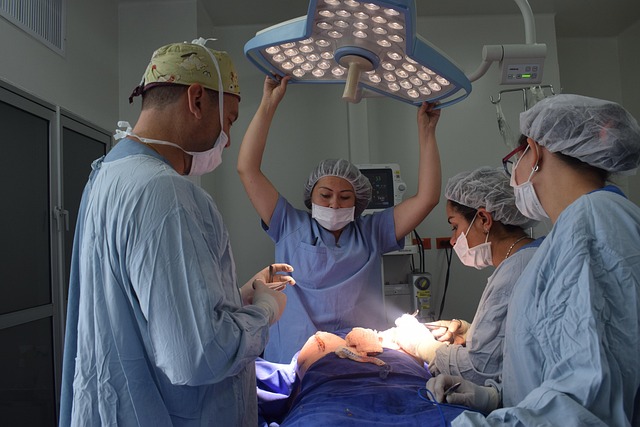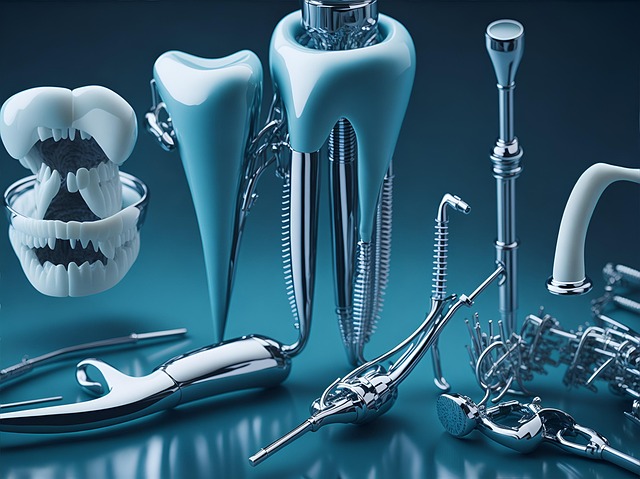Cosmetic surgery, while offering transformative benefits, carries inherent risks from minor complications to severe outcomes. Cosmetic surgery liability coverage is crucial to protect surgeons and patients. This insurance safeguards practitioners from financial losses due to adverse events or malpractice claims, enabling them to focus on quality care without fear of legal repercussions. Key components include medical malpractice, professional liability, product liability, and premises liability coverage, with policies often excluding experimental procedures or non-compliance risks. Effective risk management through transparent communication, thorough documentation, staff training, and adherence to industry standards bolsters defenses against claims, fostering patient trust in aesthetic procedures.
In the realm of aesthetic enhancement, cosmetic surgeons face a unique challenge: balancing artistic vision with potential risks. Understanding cosmetic surgery liability is paramount for practitioners seeking comprehensive protection. This article delves into the intricate world of cosmetic surgery liability coverage, exploring risks, insurance’s role, and key components essential for surgeons. From common exclusions to strategies beyond insurance, we provide insights to navigate this complex landscape, ensuring surgeons can focus on their craft with peace of mind.
- Understanding Cosmetic Surgery Liability: Risks and Challenges
- The Role of Insurance in Protecting Aesthetic Surgeons
- Key Components of Comprehensive Cosmetic Surgery Liability Coverage
- Common Exclusions and Limitations to Consider
- Navigating the Claims Process: What Surgeons Need to Know
- Strategies for Risk Management Beyond Insurance
Understanding Cosmetic Surgery Liability: Risks and Challenges

Cosmetic surgery, while offering transformative benefits, comes with its fair share of risks and challenges. As this field continues to evolve, so does the complexity of potential liabilities for aesthetic surgeons. Every procedure carries inherent risks, from minor complications like bruising or swelling to more severe outcomes such as infection, bleeding, or even permanent disfigurement. These risks can arise due to various factors, including patient medical history, surgical technique, and unexpected reactions to anaesthesia.
Navigating these complexities requires comprehensive cosmetic surgery liability coverage. Insufficient protection may leave surgeons vulnerable to substantial financial burdens, legal repercussions, and reputational damage. Adequate liability insurance is essential for managing the uncertainties inherent in aesthetic procedures, ensuring surgeons can focus on delivering quality care without the constant shadow of potential lawsuits.
The Role of Insurance in Protecting Aesthetic Surgeons

In the realm of cosmetic surgery, where precision and skill are paramount, insurance plays a crucial role in safeguarding aesthetic surgeons from potential liabilities. Cosmetic surgery liability coverage is designed to protect practitioners against financial losses arising from adverse outcomes or malpractice claims. This type of coverage is essential as cosmetic procedures, while enhancing beauty, carry inherent risks that can lead to complications.
A comprehensive insurance policy for aesthetic surgeons should include medical malpractice insurance, which covers legal expenses and settlements related to negligence claims. Such protection enables surgeons to navigate the intricate legal landscape with confidence, ensuring they can focus on patient care without the constant fear of financial ruin due to unexpected outcomes. Effective cosmetic surgery liability coverage fosters a culture of safety and professionalism within the industry, ultimately enhancing patient trust in aesthetic procedures.
Key Components of Comprehensive Cosmetic Surgery Liability Coverage

The key components of comprehensive cosmetic surgery liability coverage are designed to protect practitioners from potential risks and financial burdens associated with their work. Firstly, medical malpractice insurance is essential, providing financial protection in case of negligence leading to patient harm. This includes coverage for errors in diagnosis, treatment plans, or post-operative care. Additionally, professional liability insurance offers a safety net against lawsuits arising from alleged breaches of duty or failures to meet the standard of care expected in the industry.
Cosmetic surgeons should also consider including coverage for incidents involving product liability and premises liability. Product liability protection is vital if a surgeon uses a faulty device or recommends a cosmetic product that causes adverse reactions. Premises liability insurance, on the other hand, protects against claims related to injuries sustained on the clinic’s property, such as slip-and-fall accidents or equipment malfunctions.
Common Exclusions and Limitations to Consider

When it comes to cosmetic surgery liability coverage, understanding common exclusions and limitations is essential for both surgeons and patients. Many policies exclude procedures considered experimental or not medically necessary, as these often carry higher risks with uncertain outcomes. This includes emerging techniques, non-standard treatments, or surgeries performed outside of established medical guidelines.
Additionally, certain complications may not be covered, such as those resulting from patient non-compliance, pre-existing conditions, or incorrect patient expectations. It’s crucial for surgeons to communicate openly with patients about potential risks and limitations to manage expectations and ensure the best possible outcomes. This transparency helps establish a clear understanding of what is and isn’t within the scope of coverage, fostering trust between surgeon and patient.
Navigating the Claims Process: What Surgeons Need to Know

Navigating the claims process is a critical aspect of cosmetic surgery practice, as it directly impacts surgeons’ professional lives and reputations. When facing potential lawsuits or insurance claims related to cosmetic procedures, understanding the steps involved is crucial. Surgeons must be well-versed in their local legal frameworks governing medical malpractice suits, as these can vary significantly from region to region. The initial step involves reviewing the specifics of each case, including the patient’s consent forms, treatment records, and any post-operative complications or adverse events.
Effective communication with legal counsel specialized in cosmetic surgery liability coverage is essential to ensure a robust defense strategy. Surgeons should document every interaction with patients thoroughly, maintain detailed medical records, and adhere to industry standards and best practices. This proactive approach not only helps protect against claims but also demonstrates the surgeon’s commitment to patient safety and ethical practice.
Strategies for Risk Management Beyond Insurance

In addition to carrying comprehensive insurance policies, aesthetic surgeons can further mitigate risks through proactive risk management strategies. One key approach is establishing clear, detailed consent forms that outline procedures, potential outcomes, and associated risks transparently. Informed consent not only educates patients but also serves as a shield against unexpected claims. Regular staff training on safety protocols, including proper technique and emergency response procedures, can significantly reduce the likelihood of medical errors and adverse events.
Another effective strategy involves keeping meticulous records, including patient histories, surgical notes, and post-operative follow-ups. Documenting every step ensures accountability and provides a comprehensive defense in case of disputes. Additionally, staying updated with industry standards and best practices through continuous professional development can help surgeons maintain the highest level of care, thereby reducing their exposure to cosmetic surgery liability coverage claims.
